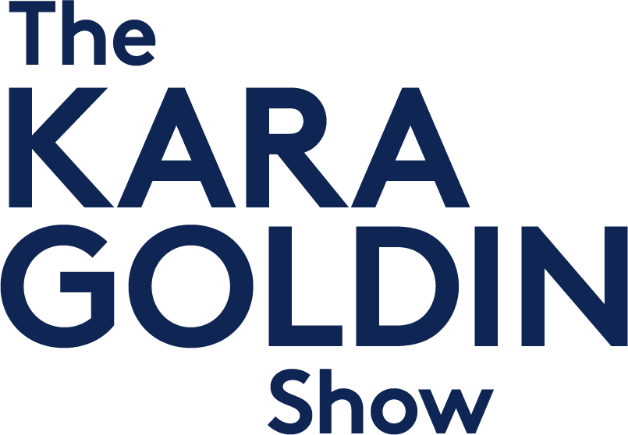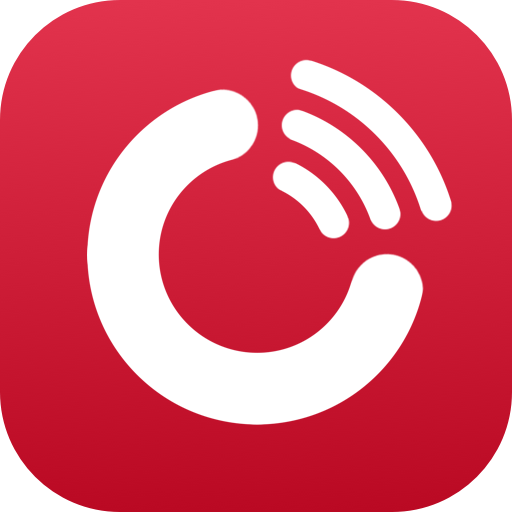Charlie Melvoin: Co-Founder of Zygo
Episode 683
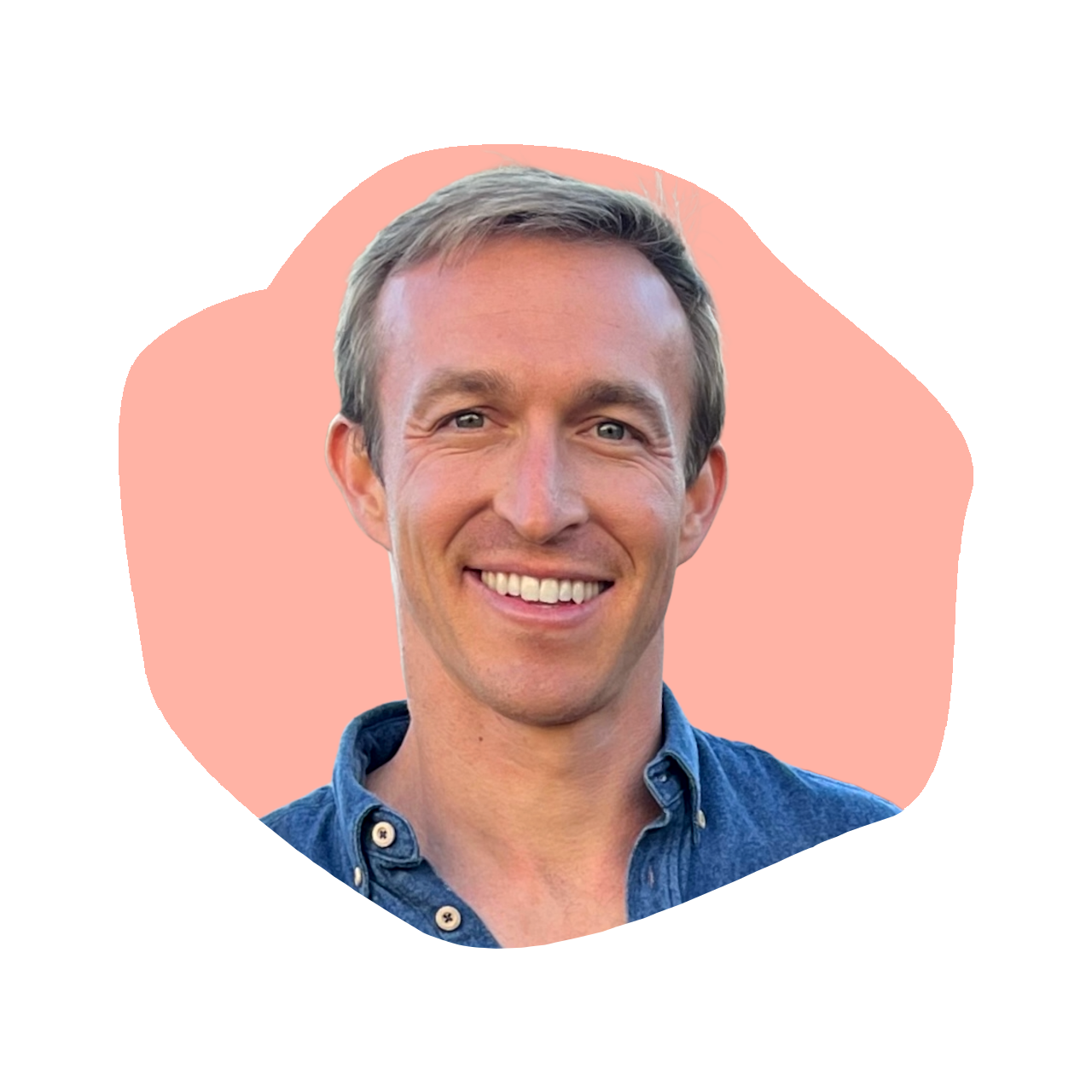
On this episode of The Kara Goldin Show, we’re joined by Charlie Melvoin, Co-Founder of Zygo—the world’s first and only underwater streaming headphone that’s transforming how we think about swimming. With bone-conduction technology and real-time audio streaming, Zygo is bringing connection, coaching, and community to a workout that’s traditionally been silent and solitary.
During our conversation, Charlie shares how he and Co-Founder Sheera Goren built a first-of-its-kind product in a space that hadn’t seen innovation in decades. We dive into the wild journey of launching a hardware startup, the unexpected challenges of building tech for underwater use, and what it takes to create a new category in fitness. From investor conversations to user behavior to the future of sports tech, this episode is packed with insights for founders, builders, and fitness fans alike.
Whether you're a founder or a consumer interested in the next thing in innovation, this episode is packed with insights you won’t want to miss. Now on The Kara GoldiShow.
Resources from
this episode:
Enjoying this episode of #TheKaraGoldinShow? Let Kara know by clicking on the links below and sending her a quick shout-out on social!
Follow Kara on LinkedIn – Instagram – X – Facebook – TikTok – YouTube – Threads
Have a question for Kara about one of our episodes? Reach out to Kara directly at [email protected]
To learn more about Charlie Melvoin and Zygo:
https://www.instagram.com/zygoco
https://www.linkedin.com/in/charlie-melvoin
https://www.instagram.com/charliemelvoin
https://www.linkedin.com/in/sheera-goren
https://www.shopzygo.com
Transcript
Kara Goldin 0:00
I am unwilling to give up that I will start over from scratch as many times as it takes to get where I want to be. I want to be you. Just want to make sure you will get knocked down. But just make sure you don’t get knocked out, knocked out. So your only choice should be go focus on what you can control. Control. Hi everyone, and welcome to the Kara Goldin show. Join me each week for inspiring conversations with some of the world’s greatest leaders. We’ll talk with founders, entrepreneurs, CEOs and really, some of the most interesting people of our time. Can’t wait to get started. Let’s go. Let’s go. Hi everyone, and welcome back to the Kara Goldin show today. I’m super, super excited to be joined by an incredible innovator who is transforming the swimming experience, Charlie Melvoin, who is the co founder of Zygo. And if you haven’t heard of Zygo yet, you’re gonna be so excited to learn all about it. It’s the world’s first and only underwater streaming headphone, and it’s a game changer for not just swimmers looking to stay motivated, connected and engaged during their workout, but also for people who are just excited about audio technology overall, Zygo turns the pool into a place for podcasts like the Kara Goldin show, playlist, coaching event community. So Charlie and his co founder Shira Goren saw a massive gap in the industry and decided we need to just go do this. And that sounds familiar from many other founder stories that we’ve heard about. So I’m so excited to get into the journey, and really, more than anything, I’m sure it’s going to be a master class and and working with hardware and developing it and scaling the company as well. So very, very excited. So welcome Charlie. Thank you so much, absolutely, very, very excited to have you here. So as I said, Thank you so much. I got to try the product, and it’s really, really unique and terrific. So congratulations. Really great, really awesome. So let’s start here. What? What is Zygo like? How do you explain it to people when they say, Charlie, what? What is this? I mean, how would you describe it?
Charlie Melvoin 2:28
Yeah, now I’m just gonna play it on this podcast, because you did a perfect introduction. We often say as our elevator pitch, the peloton of the pool in that we developed our own proprietary hardware, so the first headset to stream live audio straight from your phone, as opposed to having to preload an mp three player. And then we also have an optional app of guided workouts, just like peloton. So if you want to do a 10 minute mindful swim or a series to train for your first triathlon, we have a license with Universal Music, so it’s all popular songs and a great team of coaches who are crafting all these workouts. And right now, they’re all on demand, pre recorded, but hopefully in the near future, we can do the live class situation where then someone showing up to a pool in LA, someone in New York, me in London, we can all tune in to a live class, be welcomed by the coach in real time. Hey, Charlie, congrats on your 100th swim and and have all those those barriers disappear from traditional swimming, where you get into your lane, it’s often silent, very solitary, quite intimidating, and now we’re hoping to transform it into a more community driven, entertaining activity, the way we’ve seen happen across the fitness landscape. Were you
Kara Goldin 3:34
a swimmer? I mean, tell me a little bit more about kind of your background and why you saw this. What made you see this hole in the market? No,
Charlie Melvoin 3:42
yeah, Sherry and I were not swimmers. We needed this product to get into swimming. We often joke, it was the most expensive gift we bought ourselves. We both loved boutique fitness, meaning various boot camp, Soul Cycle, yoga, pilates, all this incredible, innovative fitness that had a charismatic instructor, great music, a really creative class format made an hour go by, and so turned exercise from being a chore into often the highlight of one day. And then we both had wanted to get to swimming independently. We were high school classmates and reconnected at a friend’s wedding, geeking out over boutique fitness. And I said, I want to get into triathlons, but swimming so boring. Want to get into swimming too. And we said, why couldn’t we apply the same playbook that has made berries and Soul Cycle so fantastic to the pool? And so our first business actually was a class. So we went to pools around LA, got Pool time where we could Lane time at all hours of the day, and then recruited a team of coaches came up with a format that could work for both a serious swimmer, you know, an Iron Man athlete, and also someone who hadn’t swam, maybe since they were child and was quite scared, right? So we equalize, neutralize the differences in swimming ability with a class format that had lapsed, but also pool based exercises in the shadowland or deep end, if there was, if there was one, um. And then we had to find a way for a coach to be on a microphone the same as they are these other classes. And that’s when we hit a wall. And thought, as two non swimmers, we could just search for a variety of different products to use, but there’s absolutely nothing. And we’re like, How does anyone coach swimming? You’re just, you know, are they shouting from the side of the pool or waiting to just give delayed feedback? And that’s exactly how it is. And so we had to do some research. Found a product from China that we hacked to fit our needs, and ran these classes called swim team in LA, as far as we know, we’re the first and only, I think, swim offering on class pass. And had four or 500 of these classes in the summer of 2017 and people liked them. But a was operationally, a nightmare to run them, very thin margins, very difficult to get the Pool time, et cetera. But B people kept asking over and over again, can I buy this headset and do your classes on my own, like peloton? And so that was the aha moment, the classic pivot, where we went from being a live class to then a connected fitness company.
Kara Goldin 5:58
So developing the first prototype. Can you talk about what it looked like? You mentioned briefly that you did that, but I’d love to hear how different that was versus what you see today. Yes, and
Charlie Melvoin 6:13
I think that’s an area where is often the case in these stories, our naivete was our huge advantage, because this was summer, 2017 we took the Chinese one to a team of engineers, because she and I are not technical, and thought, oh, we’ll be shipping by Christmas, and we were just two or three Christmases later, so we had to tear it apart understand how they were making it work. And it turned out that the Chinese one was using a radio frequency that was not allowed in the US that was a government channel. And so, in fact, the engineers didn’t want to put that in writing. They called us and said, Hey, you guys need to come in and we’ll share what we’ve discovered from the tear down. And that explains why it didn’t have a more ubiquitous presence in the market, in the US that we had to do, you know, kind of go direct to a factory, because I should say that Bluetooth doesn’t travel to water. Otherwise, your Airpods could do this. Any headset could could work in the pool. And so Bluetooth is one of many radio frequencies, most of which hit the water and just die instantly. So you need to have a transmitter that converts Bluetooth from your phone into a different radio frequency that can travel through water. And there are very few that can just on a physics basis. And then you layer on top of that the regulatory landscape, like I mentioned, government channels having to register the device to have a license to use it, things that would be a deal breaker from a consumer perspective. So it was very hard to do. And then, of course, it’s a wearable, but not a classic dimension. It’s not like a baseball cap, sort of around the head size. It’s from in front of your ears, looping over behind the skull. Everyone’s skull and sort of neck width is different. It’s waterproofing electronic device. So as two non hardware people, we picked a pretty challenging first first project, but we assembled the right team and and it did take three years. So we just kept, kept putting out fires and running into walls and then getting around them, and I did an Indiegogo campaign to get our first backing base that were very sympathetic to the inevitable delays with with hardware and could give us feedback. And so shipped the first ones, very non ideally, early 2020, and went through COVID. Now we’re going through tariffs. So it’s, it’s been a journey.
Kara Goldin 8:29
Yeah, it’s, it’s crazy. Did you ever in those early days when you were running into things like learning that the signal was not the right signal to be able to launch this product where you thought maybe we shouldn’t do this,
Charlie Melvoin 8:48
no. And I think the validation that came from those classes is what kept us going, because we were doing our classes as well. We loved it, and we said, Wow, I would never have spent 45 minutes in a pool. And that just flew by because we had the instruction, the music, the sense of community. So we had seen it for ourselves. Hundreds of people come through the class and and the demand was so clear and the market was so untapped, because we looked at all the other categories in fitness, we knew the direction they were going, whether it’s spinning, running, strength training, yoga, place, everything was heading in this direction where people want that sense of entertainment, something larger than yourself, the charismatic instruction and swimming just felt completely Greenfield while these were getting saturated. So the combination of like, the inspirational stories of people saying, hey, like your class helped me, you know, recover from x injury or lose weight or prenatal, whatever it is, everyone knows the benefits of swimming, theoretically, low impact, full body. It’s something you could do till you’re 100 but there is a lot of friction, and so I think we were just on this mission. Still are that this could help people, in a serious way, spreading enjoyment of what we know to be a fantastic form of exercise.
Kara Goldin 9:56
Yeah, definitely. So just backing up a little bit, you. Have experience in actually creating a hardware piece before? Did your co founder have the experience?
Charlie Melvoin 10:07
No, sure. Had a legal background. I had worked in various businesses, tech companies, but I had a Chinese background. I speak Mandarin, and was living in China for several years, so that was helpful, because that’s where we scouted our factories. But no, we had no technical background, and had to assemble the team and have a real, I think, beginner’s eyes to just learning as we go and asking maybe dumb questions. And even still, it is highly technical, so we’ve learned a lot, but it’s, it’s, it’s, it’s been about assembling the right team, and most of them actually are still with us today. They’re freelance because we’re so lean and have had to be so scrappy. So there’s only three of us full time, Shira, me and one customer service hire. But then we have this motley crew of an engineer, intellectual engineer in Texas, the mechanical guys were in Australia, the app developer in California, the factory, of course, in China. So we found the right skill sets for the moment. How
Kara Goldin 11:03
important has it been to have a co founder, especially in a in a process where you know the the impossible is getting created, you’re running into roadblocks. And what have you found in in really having, I think, the, you know, the strength of another co founder, 100,000,000%
Charlie Melvoin 11:29
I could not have done it alone. And have so much respect for solo founders, for any founder, but especially solo founders, because we’re not for Shira, I wouldn’t have been able to do this. So your question for hitting the roadblocks, because it was the two of us. It never felt insurmountable. It had it been just me. I don’t think I could have continued. We have really complimentary skills. We have really complimentary personalities. Were we’ve been long distance ever since the beginning, and actually, I think that’s also been helpful in a way. She’s in LA, where we’re both from, I’m in London. We’re not on top of each other, and in hardware, there’s going to be these lulls of waiting. You’ve made decisions. The factory has to implement the tooling change, or you have to get the parts certain prototypes. And I think had we been together, we would have fueled a sort of anxiety that now we we don’t have. And of course, covering Europe and China time zone wise has been helpful. But no having, having her, having the right co founder, is the single biggest recommendation I have for people, if you can be so lucky, as I was, to find the right person.
Kara Goldin 12:30
So go to market strategy after three years, you finally get it ready to go out there. And so what? How did you think about your go to market strategy
Charlie Melvoin 12:44
at the beginning with this Indiegogo base, we felt like, if we serve these people well, then word of mouth will be our most powerful form of marketing, especially because it’s so visible, it’s you go to a pool, and 99% of time, no one’s using any sort of headset. If they are, it was an mp three player. You ask, Hey, do you like that? And they’ll almost always say, No, like it’s not comfortable. It falls off it. I have to preload it. I always forget to preload it. I’ve listened to the same 10 songs since 2012 and so we felt like this was our chance to deliver a sort of white glove service to I think it was 600 800 customers that we wouldn’t be able to do at scale, but it was checking in on them, asking, Hey, is there any specific app content you’d like to see, and we could actually tailor it for you duration or sort of interval training and understand their pain points and and because also it’s bone conduction. And so if you’ve never used bone conduction, it doesn’t go in your ears. It’s a kind of headset that you can actually share at a pool with a stranger and not be grossed out the same way you might if it went in your ears. So we had people who say, I get approached all the time asking, What am I listening to? And I just let someone swim for a lap or two and experience it. So that was really powerful. And still is, is, is our, our biggest. I just was checking, actually, our post purchase questionnaire we have, how did you find us? And that organic word of mouth is still the biggest, which is great. And from there, it’s mostly been the online advertising, because we’ve only ever sold direct to consumer on our website. We haven’t been on Amazon. We haven’t had any brick and mortar retail distribution, so that’s been the strategy since then, but we’re hoping to change that now. It’s just the missteps of hardware can be so severe. We definitely don’t want to go to Amazon too early, and also need to be close to the customer, and so Shira and myself are either responding to or BCC on still almost every single customer email to have our finger on the pulse of how people are using the product, and we just launched a second model. So understanding, did we do our job of raising the bar on the technology? But we hope to be. Great to have an on site presence at pools, hotels in gyms were just still quite small.
Kara Goldin 15:06
So you won times best invention of 2022, for the business, awareness, credibility, traffic. What did that do for you?
Charlie Melvoin 15:18
That was Major. It was, it was a major boost for us. It was, it was totally unexpected. We had a call months before. It didn’t think twice, thought not going to happen, or there’s some, you know, catch and that was exactly what we needed in that moment, because the customer feedback, of course, is essential to keep going, but having some moment time recognize it, they had put it really through the paces with with swimming with it and comparing it to other devices, and so that was great. And of course, then there’s the the outward facing, the credibility it gives you on the website when you’re pitching investors to say we’ve been recognized in this way. So yeah, yeah, definitely.
Kara Goldin 16:01
Is there a market in particular that you’re focused on geographically? I mean, obviously people who swim, but when you think about this product and where you think people will really understand it the most is there. Is it Europe versus the US? What has been sort of your thinking on that.
Charlie Melvoin 16:23
Yeah, thus far, for logistical reasons alone, we’ve only been the US. I’m in London for personal reasons, but we’ve only been shipping in the US. That’s changing right now as a response to the tariffs, we have to reassess our strategy, because our price is going up a lot. We’re accelerating the plans to open Canada and Europe, but so far, it’s been focused on the US, which also makes a lot of sense, because it is such a big market. They say that about 10% of the American population swims recreationally, which would put it at 30 33 million people, which is enormous, and that’s people who identify as swimmers. And we view it as sort of peloton effect, like if you had asked how many people were cyclists before peloton, you weren’t going to get the number of people who now sit on a peloton bike multiple times a week. So we think there’s a lot of latent potential too. So there’s the crowd of swimmers already, but so many yet to be converted swimmers, yet to be inspired swimmers, the runners, the gym goers. That’s another 60 million or so people in the US. And then within the US we get like California, Florida, Texas, there’s a certain distribution, but we see every sales email still it’s we’re not big enough, sadly, to unsubscribe from the Shopify order confirmations. And can see that there is real geographic distribution. So we’re hitting every state every month. So
Kara Goldin 17:38
what part of building this business has been much more complicated or harder than you expected.
Charlie Melvoin 17:46
Well, I think it’s the multiple phases of getting from design drawings to the customer facing product. And I thought, Oh, you have these expert mechanical engineers, electrical engineers, they’re going to do drawings, hand it to a factory, they make it, but there’s a lot that then happens in that next step of the tooling experts and the factory assembly team that then will give their feedback, and that just adds so much more time. So if I’m looking at another founder, first time hardware founders timeline, and they haven’t included a really healthy buffer for what’s called DFM, the design for manufacturing when it changes a lot. And then there’s this really interesting dance that happens between the teams, because everyone’s has a selfish interest here. The tooler wants to make it as as simple as possible, or as reliable as possible, so you don’t have a high scrap rate. The factory wants to make it as easy to assemble, so that they don’t have to pull more resources, necessarily the original mechanical team or design team wants their drawing to be intact because they had a vision and they love it. So it’s interplay, and then we, ultimately, as the owners, have the final say. But we also don’t have the same background necessarily. So we have to listen on all this, absorb all the information, and then make these decisions that we hope are, are the right ones, basically pushing in one direction or another. But that’s, that’s tricky. There’s there, yeah, it’s not just the technical aspect. There’s some large personalities sometimes, and the politics of who’s then going to be accountable. Like, okay, you, you my electrical engineer could say one thing, but if then that leads to problems down the line, is he gonna be the one paying for to fix it in the field? So it ends with us, and we have to balance, like our conservative instincts within you know, what else we’re hearing in the conversation,
Kara Goldin 19:38
definitely. And you’re not just a hardware company, because you also have the content side of your business as well. So how did you think about launching the content piece of it? Like, did you have to launch with so many pieces of content before you would launch? Or, how did you think about. That and how important is content for your company? That’s a really
Charlie Melvoin 20:06
good question, and we had some people early on who said, don’t waste your time with the app. You have limited resources. That’s a waste of money. If you’re just a hardware company, you’re going to be sold to someone for just that technology. But we felt really strongly, because we idolized peloton still do, and because we knew that there are a lot of people who need to be instructed. So you get to a pool and what do I do? Okay, I swim 510, laps. I haven’t swim for years. Is that That’s my workout. And so having that companion app where someone crafts the the 10 minutes or hour for you and says, Hey, let’s warm up with this and think about this technique. And as I play this song, I want you to swim at this pace, and even the fun stuff like chorus pickups, when you hear this, then I want you to increase your speed to this and incorporating gear which totally diversifies the swimming experience. A lot of people are never using paddles, a swim buoy between your legs, a pool boy, fins, a snorkel. And so encouraging people, Hey, like, mix it up. This makes it go way, way faster. So that was the original idea. We just thought strongly about it. This was a content ecosystem that we believed in and thought we would be good at, and then it’s actually proven to be totally essential because of the firmware updates. So now we’ve shipped product, 1000s and 1000s of headsets. And if there’s something we’ve discovered to optimize the battery life or to we just introduced something called spoken word mode, where we figured out a way to enhance the clarity of podcasts and audiobooks, for example, which is different from when you’re playing music. That was just a firmware push. And if we didn’t have the app, no one could benefit from our ongoing R D, in that. In that sense, we also have devised our own custom lap counting algorithm. It’s about to be released. So then the app becomes a place to that could replace, you know, an Apple watch or something else, to count your your laps, record distance, gamify it like hey Kara, in the month of April, you swam the length of English Channel and do the badges and things. So the app to us, it’s, it’s been secondary, both in focus and in revenue, for sure, but we believe that it’s, it has been, it has been critical, and is especially for those firmware updates. But it’s also, it’s a great way to have people to have that sense of community too, because the music is great, the podcast and audiobooks, anything else someone can stream is great. But stream, is great. But the stickiness, I think, will come from feeling like you’re getting better and you’re developing a relationship with the coaches or Yeah, so we’re happy with the trajectories on
Kara Goldin 22:32
Yeah. And also just being able to measure success, right? How long, how often are people signing in, then, do people swim typically, who are signing on to your program daily? Or how many times a week are people? I’m sure you have different levels of of people who are using the product. But what have you seen so far that’s interesting for you?
Charlie Melvoin 22:58
Yeah, well, slightly different answers. In terms of product use, 70% of our customers use zygote every time they swim. So they forgot it at home, they’ll turn around and get it. Someone called it as as indispensable as goggles, which we, of course, love. And then in terms of the frequency of their swimming, I think the average is was about once a week, twice a week. There’s a seasonality, for sure. As we’re entering spring of summer, you’re gonna get more than in the winter. And then there are some people who are every single day, 5am 6am they’re swimming there, whatever it is, one hour, one mile. But the average we’ve seen is about once a week.
Kara Goldin 23:37
That’s That’s terrific. So when you’re dealing with imposter syndrome. We’ve all, we’ve all got it that where, you know, maybe you see a product that’s coming out that is similar, of course, not as good as yours, but something that that maybe the consumer may be confused by along along the way, how do you deal with that as a founder? Because I think that’s that’s real, right? You’re trying to focus on your product, but then you’re always seeing people come out with something that maybe you had been trying to do, or maybe it’s in the case of hint, maybe it’s a flavor that I had always wanted to get right, and then I saw somebody doing it, or maybe they’re doing it wrong and and that’s going to really frustrate you, because you want to do it right. I don’t know, whatever it is, all along the lines of imposter syndrome. How do you deal with that? As a founder,
Charlie Melvoin 24:38
that’s, I think we’re having a co founder definitely helps. It’s often a form of therapy I feel talking to Shira. But there have been times actually, there’s a smart goggle company that can show you real time metrics, and they have this really clever marketing ploy of often, like teasing. You know, in five days, we’re making an announcement. In two days making that one okay, and I. Every single time, I’m like, sure they’re gonna announce that they’ve done a headset like us, and then we tell each other, you know, that actually would be great. It’s good to be the first entrant, entrant. And there’s something nice about having a current monopoly, let’s say, on this technology. But of course, first of all, someone else entering validates that it’s a market worth being in, and then they also help with education. And so in that specific instance of a competitor emerging, like tomorrow morning, we wake up and find someone else that’s done this, they’re going to help us educate people on what’s different about streaming versus mp three, because that’s often something we have. How does that go different? Oh, we’re the only ones that can stream. Oh, but my other one says it can go underwater. It’s Bluetooth. It’s like, well, it can’t. So, so we find that glass half full attitude there, and there isn’t yet one in the seven years of it doing it. And I think that’s mostly a product of it being so hard we’ve had to raise a lot of money, spend eight years of our lives dedicate on this. It’s, it’s, it’s a hard product to do. But I also think people often underestimate the size of the market. The bigger players are underestimating what they do as a niche category within audio. So we hope to reach a certain level of traction to then to alert them to the real potential here.
Kara Goldin 26:16
So you touched on investors. You and I were briefly talking about this before we hit record. But can you share how you’ve been able to raise money to get Zygo not only off the ground but continuing to scale?
Charlie Melvoin 26:30
Yeah, that’s been a real slog. We have no institutional investment. We tried. Our spreadsheet is hundreds and hundreds of VCs, many of whom just categorically do not invest in hardware. And then we did the typical founding thing of, Oh, they’ve invested in X similar hardware company, a connected fitness device. Let’s approach them. And they often say, yeah, that’s our one hardware bet. We’re going to wait to see how it plays out. We’re already overexposed on hardware, so that was really frustrating. And we’re also, again, not hardware people. So we’re not two Apple engineers that tick that box of Oh, perfect founder profile. They they’re a no brainer. So it’s been individual angels and family offices and just a lot of calls, kissed a lot of frogs. We have some Olympic swimmers, triathletes, which have been fantastic, but our cap table is really big, and all wonderful people who are supportive, helpful when we need them. And we actually have some customers too, we have been very scrappy in looking at who gave us five star reviews and either blasting those people, letting them know we’re doing a raise, or even looking at smart looking at their order data and going so far as to googling house addresses and say, okay, that house looks pretty nice. I’m sure they can afford, you know, to participate in this round. And so we found some that way, people, surprise you, of dentist put in, you know, $400,000 and someone we thought, Oh, they’re a huge swimmer. They’re really wealthy. They run a VC for sure. They’re going to get this. They love peloton. We’re just like bonding over their favorite instructors. Oh, they’re going to write a check. And no, so I think you do just have to keep your head down and but it’s been, it’s been hard. We’ve been very scrappy. And I think at any point in our history, if we really had settled all outstanding bills, it would have, it would have put us in a bad position. But you build up those relationships, negotiate the right terms of the factory, because the working capital you need to put down a down payment for the next 2000 4000 units, is huge. So having the right structure there has been helpful too, to stretch our limited funds.
Kara Goldin 28:36
Well, Zygo is such a great product, and you’re doing such an amazing job. I’m very, very excited to continue watching it grow. And everybody needs to get a Zygo and and follow your progress as well. We’ll have all the info in the show notes, but it’s at shop zygo.com to learn more about it. Thank you so much for coming on, Charlie and sharing what you’re doing. And thank you everybody for listening. Thank you, Kara. It’s been a pleasure. Thanks again for listening to the Kara Goldin show. If you would please give us a review and feel free to share this podcast with others who would benefit. And of course, feel free to subscribe so you don’t miss a single episode of our podcast, just a reminder that I can be found on all platforms at Kara Goldin, I would love to hear from you too. So feel free to DM me, and if you want to hear more about my journey, I hope you will have a listen or pick up a copy of my Wall Street Journal, best selling book, undaunted, where I share more about my journey, including founding and building. Hint we are here every Monday, Wednesday and Friday. Thanks for listening, and goodbye for now. You.
People Also Liked
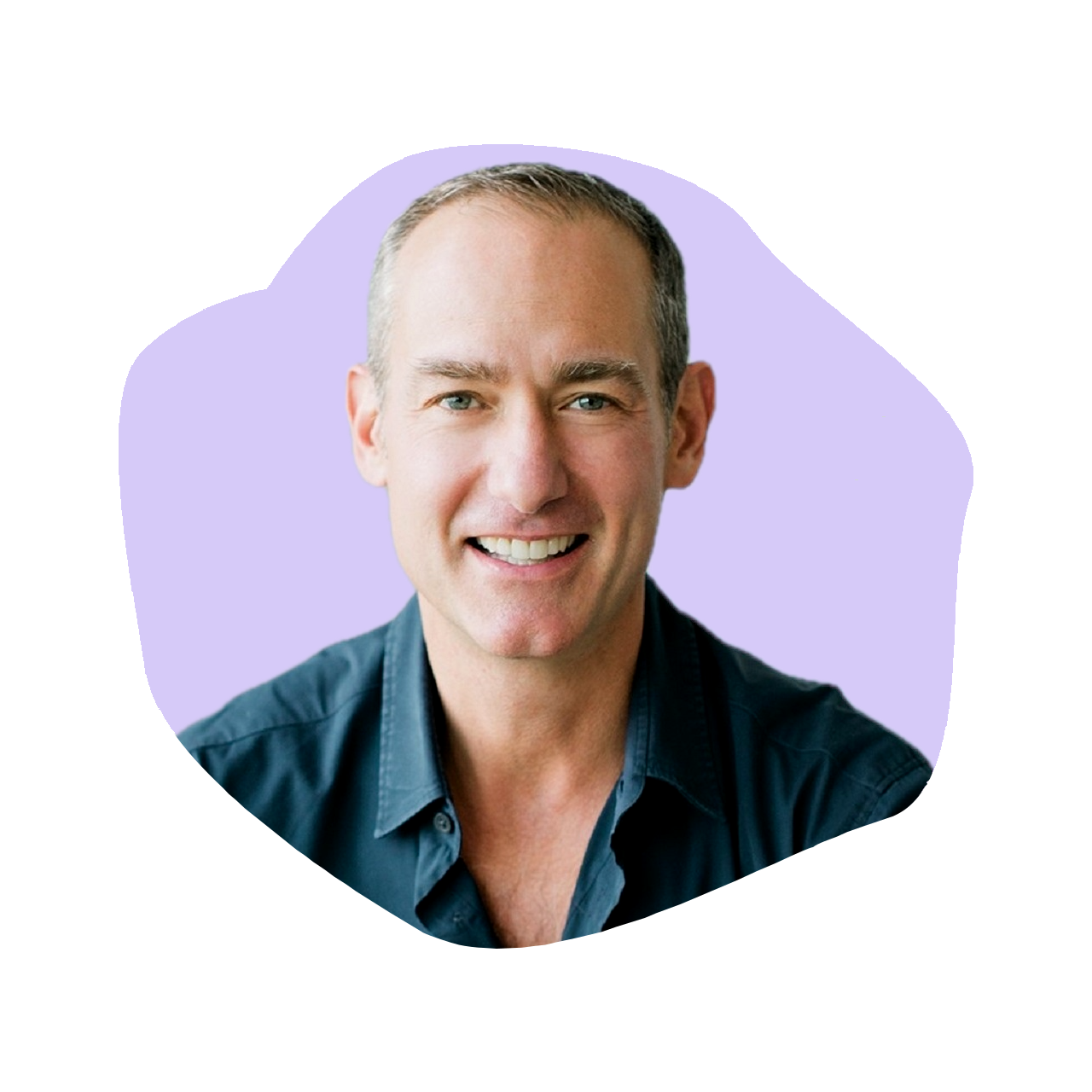
752
Mark Rampolla: Author of An Entrepreneur’s Guide to Freedom and Founder of ZICO
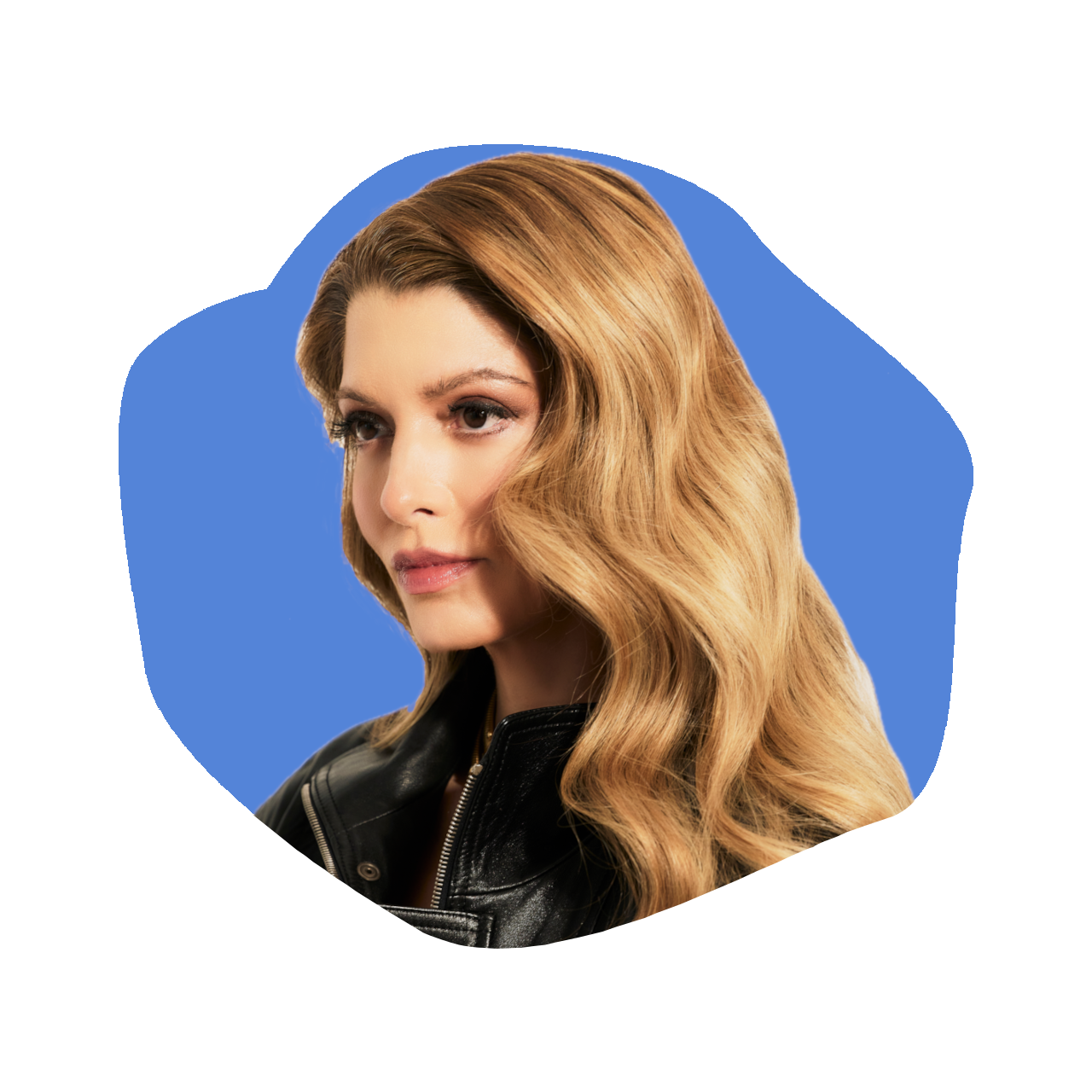
751
Deborah Pagani: Founder of Deborah Pagani Beauty
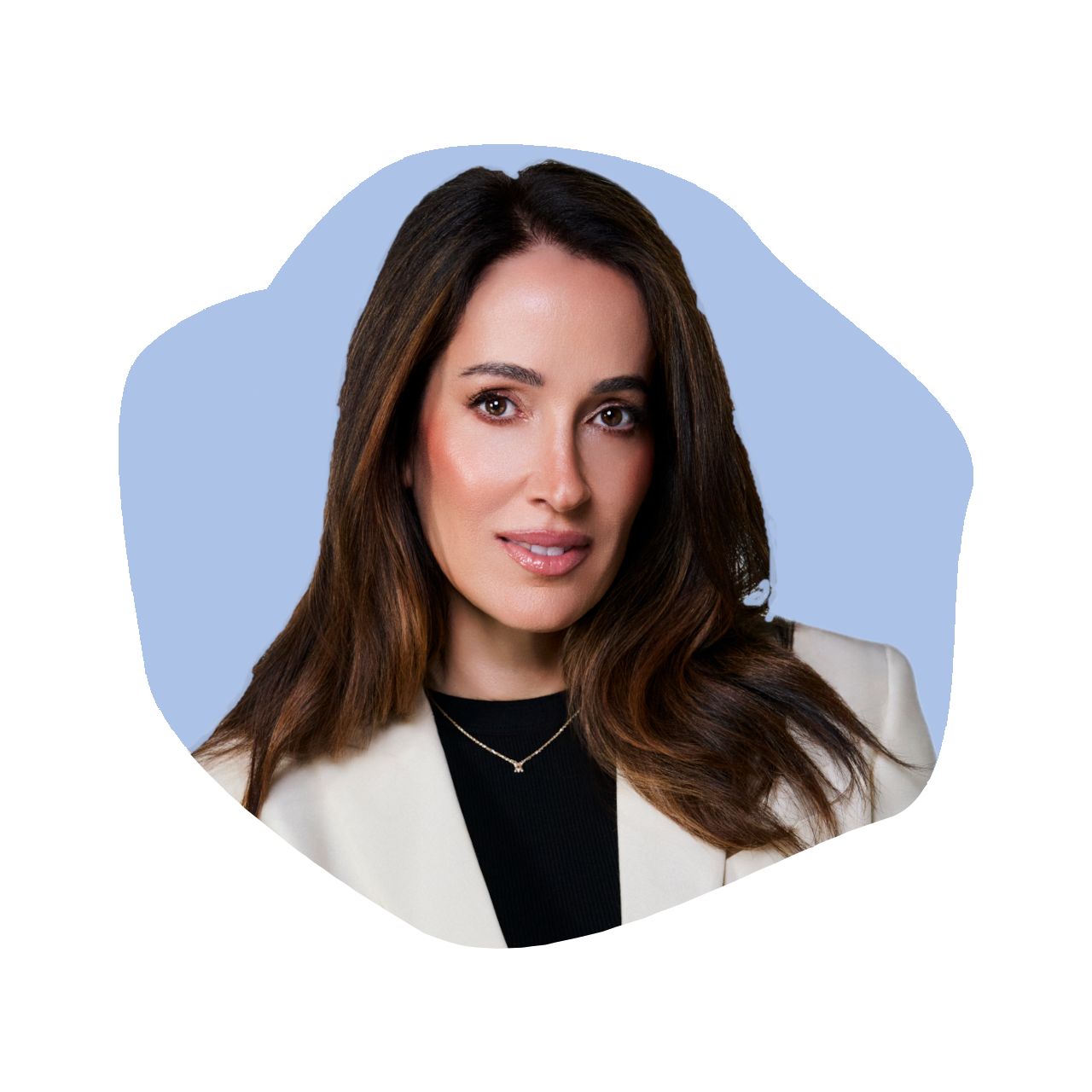
750
Angela Caglia: Founder & CEO of Angela Caglia Skincare
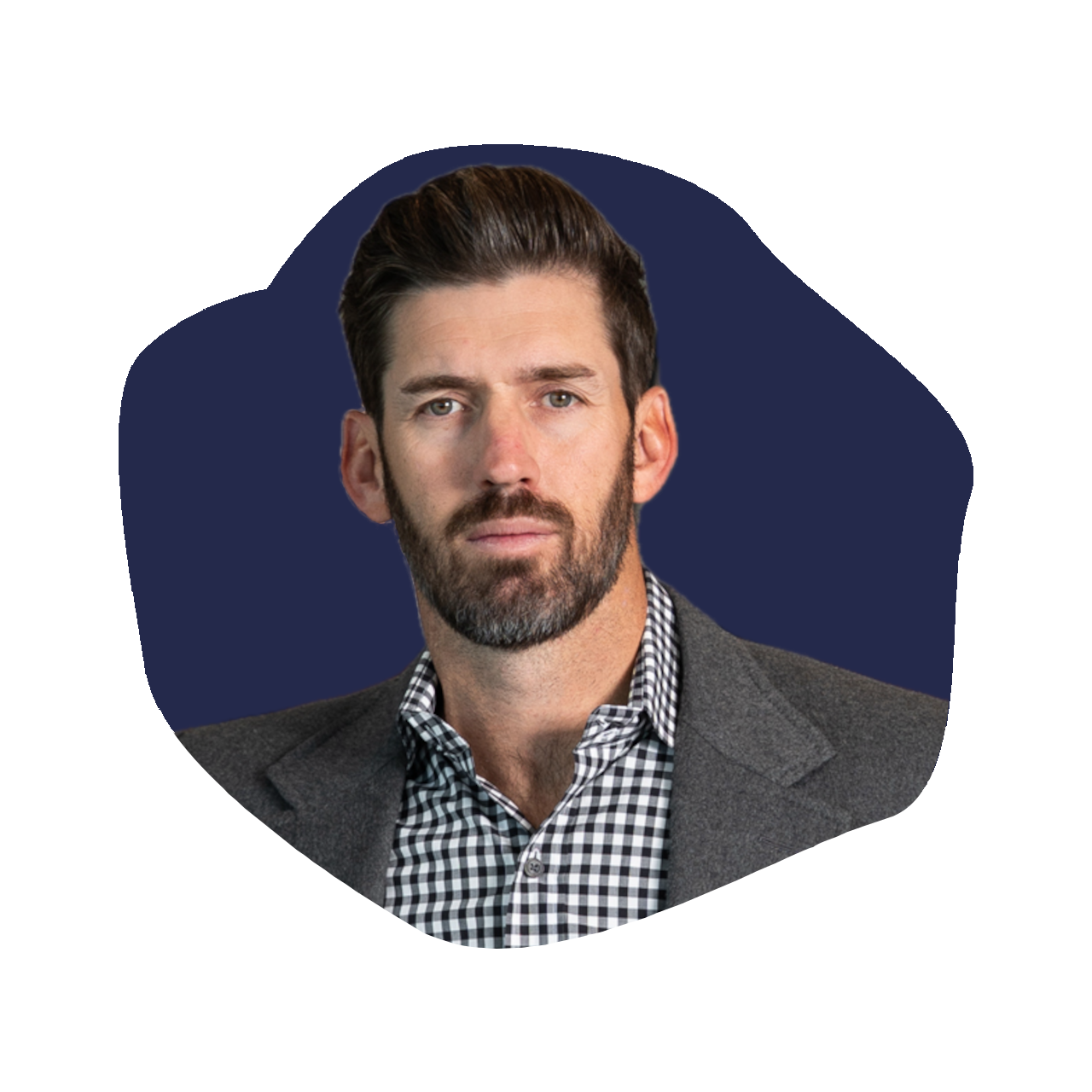
749
Doss Cunningham: Chairman & CEO of Nutrabolt

748
Cheree Ashley: Founder & CEO of Osier
